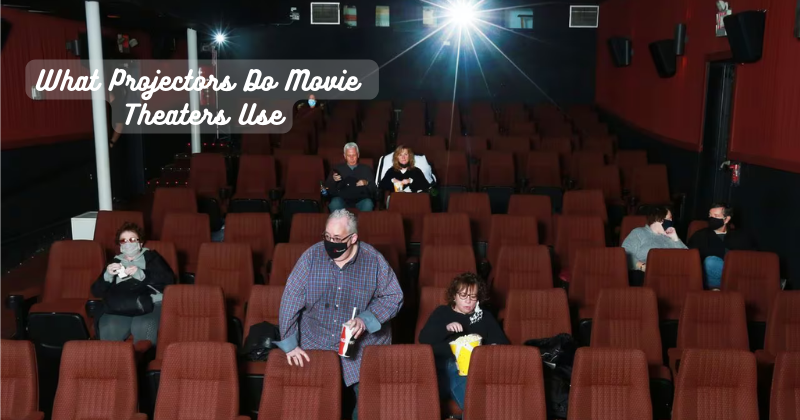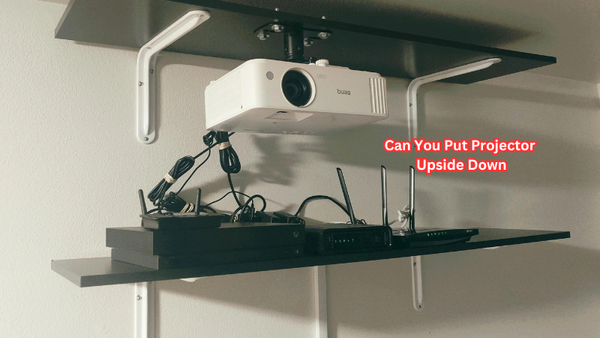Movie theaters use high-quality projectors to provide an immersive cinematic experience for moviegoers. These projectors are designed to meet the specific requirements of a large-screen display with advanced features and cutting-edge technology.
The most commonly used projectors in movie theaters are Digital Cinema Projectors (DCPs), which utilize digital imaging technology to deliver vibrant colors, sharp resolution, and excellent contrast. DCPs can project images in stunning 2K or 4K resolution, ensuring a visually stunning presentation on the big screen. These projectors often have a high brightness output to compensate for ambient light in the theater, allowing for crisp and clear visuals even in a well-lit environment.
With their superior image quality and powerful performance, projectors in movie theaters elevate the movie-watching experience to a new level. In this article, we'll look at the different types of projectors used in movie theaters and why they are vital for creating an exceptional cinema experience.
The Evolution of Movie Theater Projectors
The history of movie theater projectors can be traced back to the 1890s, when the first moving pictures were projected onto a screen using hand-cranked machines. These early projectors used film reels and produced black-and-white images with low resolution. However, as technology advanced, so did movie theater projectors.
In the 1920s, silent films were replaced by "talkies," which required a new type of projector that could play sound with moving pictures. This led to the development of sound-on-film projectors with a separate film strip for sound and visuals. These projectors were eventually replaced by digital sound systems, making the process more seamless and efficient.
Fast forward to the 21st century, and movie theaters now use Digital Cinema Projectors (DCPs), which utilize laser technology or high-powered lamps to project crystal-clear images onto the screen. These projectors constantly evolve, with new features and advancements introduced to improve the viewing experience.
The Importance of Projectors in Movie Theaters
Projectors play a crucial role in creating an immersive cinematic experience for moviegoers. They are responsible for delivering high-quality visuals that transport viewers into the world of the film. Without projectors, movie theaters could not screen films as they were intended to be seen by the filmmakers.
In addition, projectors are essential for maintaining a high level of consistency in image quality across different theaters. DCPs have strict specifications and standards that must be met, ensuring that every screening is of the highest quality. This allows moviegoers to have a consistent experience at any theater they visit.
Moreover, projectors also play a crucial role in the success of movie releases. Digital file formats allow for efficient and cost-effective distribution, making it easier for studios to release films in a large number of theaters simultaneously. With advanced features such as 3D and IMAX capabilities, projectors have the ability to enhance the visual effects and immerse viewers into the world of the film. This not only creates a memorable experience for audiences but also helps drive ticket sales.
What Projectors Do Movie Theaters Use?
As mentioned earlier, Digital Cinema Projectors (DCPs) are the most commonly used projectors in movie theaters. However, within this category, there are different types of projectors that have unique capabilities and features.
DLP (Digital Light Processing) and LCD (Liquid Crystal Display) projectors are two of the most popular types used in movie theaters. Digital cinema systems such as Dolby Cinema and IMAX also have their own specialized projectors that are specifically designed for their unique viewing formats. SXRD (Silicon Crystal Reflective Display) projectors are also gaining popularity in movie theaters, known for their high contrast ratio and sharp images.
DLP projectors use a chip with millions of tiny mirrors to reflect light onto the screen, resulting in sharp and vibrant images. On the other hand, LCD projectors use liquid crystal panels to produce images by filtering light through different color pixels. Both types have their advantages and are often chosen based on the theater's specific needs.
In addition to DCPs, movie theaters also use IMAX projectors for films that are released in this format. These projectors have a larger screen size and higher resolution, providing an even more immersive experience for viewers.
Digital cinema systems, such as Dolby Cinema, use a combination of laser projectors and high dynamic range (HDR) technology to deliver stunning visuals with vibrant colors and deep blacks. Some theaters also use 3D projectors, which require special glasses to create a three-dimensional viewing experience.
What Kind of Projectors Do Movie Theaters Use? Technologies Used In DCPs
Digital Cinema Projectors (DCPs) uses cutting-edge technology to deliver exceptional image quality and performance. DLP and SXRD are two common technologies used in DCPs, with each offering unique benefits.
DLP (Digital Light Processing):
DLP technology uses a chip with millions of tiny mirrors to reflect light onto the screen. This allows for precise and accurate images with high contrast and minimal motion blur. DLP projectors are also known for their brightness capabilities, making them ideal for large screens in movie theaters.
In this digital light processing method, the mirrors are tilted back and forth to create a sequence of images that form the moving pictures on the screen. Film projectors use DLP technology, making it a familiar choice for movie theaters. Digital cinema projection systems such as Dolby Cinema and IMAX also use DLP projectors.
Silicon Crystal Reflective Display ( SXRD):
SXRD technology works similarly to DLP but uses liquid crystals instead of mirrors. These liquid crystals are aligned in a grid and manipulated through electrical charges to create images on the screen. This results in vibrant colors, high contrast, and minimal motion blur. Sony's 4K digital cinema projection system uses SXRD technology, providing a high-quality viewing experience for audiences. Digital cinema initiatives such as Dolby Vision and IMAX with Laser also use SXRD projectors.
In addition to DLP and SXRD, laser technology is also becoming increasingly popular in DCPs due to its ability to produce even brighter images with deeper blacks. As technology continues to advance, we can expect to see even more developments in the projectors used in movie theaters. These advancements will further enhance the cinematic experience for audiences and solidify projectors as a crucial component in movie theaters.
Features Of A Movie Theater Projector
There are several key features that make a movie theater projector stand out from other projectors. These features are specifically tailored to meet the needs of movie projectors theaters and create an unparalleled viewing experience for audiences.
High Brightness:
Movie theaters require projectors with high-brightness capabilities to ensure clear images on large screens. DLP and laser projectors are known for their brightness, making them popular choices for movie theaters. For example, IMAX projectors can reach up to 60,000 lumens of brightness.
High Contrast Ratio:
The contrast ratio refers to the difference between the brightest and darkest parts of an image. A high contrast ratio results in a more realistic and immersive viewing experience. DLP and SXRD projectors are known for their high contrast capabilities, while laser projectors are able to achieve even higher contrast ratios.
Resolution:
Resolution is a crucial factor in the image quality of a projector. Movie theaters typically use projectors with 2K or 4K resolution, providing sharp and detailed images on the big screen. IMAX projectors have even higher resolution capabilities, reaching up to 12K. Major motion pictures are often shot and screened in 4K resolution, making it an industry standard for movie theaters.
Screen Size:
The size of the screen plays a significant role in the type of projector used in a movie theater. Larger screens require projectors with higher brightness and resolution capabilities, such as IMAX and laser projectors.
Cooling System:
With the high usage and demand in movie theaters, projectors must have efficient cooling systems to prevent overheating. DCPs often have a built-in liquid cooling system, while laser projectors use fans or water cooling methods. Cinema screen sizes can range from 10 to 30 meters in width.
High Frame Rate (HFR) Capability:
HFR refers to the number of frames per second that a projector can display. A higher frame rate results in smoother motion and a more realistic viewing experience. IMAX projectors are capable of projecting films at 48 frames per second, while some newer DLP projectors have the ability to reach 120 frames per second. A faster frame rate also allows for the display of 3D content without causing eye fatigue or discomfort for audiences.
Weight And Price:
Movie theaters require projectors that are durable, easy to install, and cost-effective. DLP and SXRD projectors are known for being lightweight and relatively affordable compared to other projector technologies.
With these and some other features, movie theater projectors are specifically designed to meet the unique needs of movie theaters and provide an unparalleled cinematic experience for audiences. As technology continues to advance, we can expect even more exciting developments in the projectors used in movie theaters, further enhancing the overall viewing experience for moviegoers.
Future of Movie Theater Projectors
As technology continues to advance, we can expect to see even more exciting developments in the projectors used in movie theaters. Some potential future advancements in DCP technology may include:
- Higher Resolution: With the rise of 8K and even 16K resolution in consumer TVs, we may see an increase in resolution capabilities for movie theater projectors.
- Improved 3D Technology: While currently limited to certain theaters and specific showtimes, we may see advancements in 3D technology for movie theaters, making it a more accessible and seamless viewing experience.
- Enhanced Color Performance: With advancements in color technology, we may see projectors with even wider color gamut capabilities, providing richer and more vibrant colors on screen.
- Eco-Friendly Options: As sustainability becomes a growing concern, there may be an increase in the use of eco-friendly materials and energy-efficient technology in movie theater projectors.
- Virtual Reality Integration: With the rise of virtual reality, there may be opportunities to incorporate VR technology into movie theaters, providing audiences with a more immersive and interactive viewing experience.
As we continue to see advancements in cinema technology, one thing is for sure – projectors will continue to play a vital role in creating an unforgettable movie theater experience for audiences.
FAQs
Which projector is used in PVR?
PVR, a popular movie theater chain in India, uses Barco's laser projectors for their theaters. These projectors use DLP technology and have high brightness and contrast capabilities. Other theaters may use different types of projectors depending on their needs and preferences.
Do all cinemas use the projector?
Yes, projectors are a crucial component in movie theaters as they provide the main source of displaying films on screen. However, some smaller independent theaters or specialty cinemas may use other methods, such as digital cinemas screens or old-fashioned film reels for projection. Digital cinema servers (DCPs) are commonly used to store and play digital copies of films in theaters.
Do IMAX theaters use projectors?
Yes, IMAX theaters use projectors specifically designed for their large screens. These projectors are known as IMAX Digital Projection systems and have high resolution and brightness capabilities, creating a unique viewing experience for audiences. LCoS and DLP technologies are used in IMAX projectors.
Why are movie theaters so dark?
Movie theaters are kept dark to enhance the viewing experience. A darker environment reduces distractions and allows for better contrast between bright images on screen. Additionally, it helps prevent eye strain and fatigue for audiences during longer movie screenings.
Conclusion
Movie theaters use high-end digital projectors known as Digital Cinema Projectors (DCPs) to display motion picture films on a screen. These projectors are designed for optimal brightness and image quality, providing a cinematic experience for the audience. Brands projectors are approved by the Digital Cinema Initiative (DCI) and meet the industry standards for projection in movie theaters.
DCPs offer advanced features and capabilities, including 4K resolution, high contrast ratios, and SXRD technology. They are specifically designed for large screens and can accommodate screens of all sizes. With their superior image quality and performance, DCPs ensure that moviegoers can enjoy a visually immersive and captivating movie experience in theaters. So, next time you're at the movies, take a moment to appreciate the impressive technology behind the projection on screen. Happy viewing!





